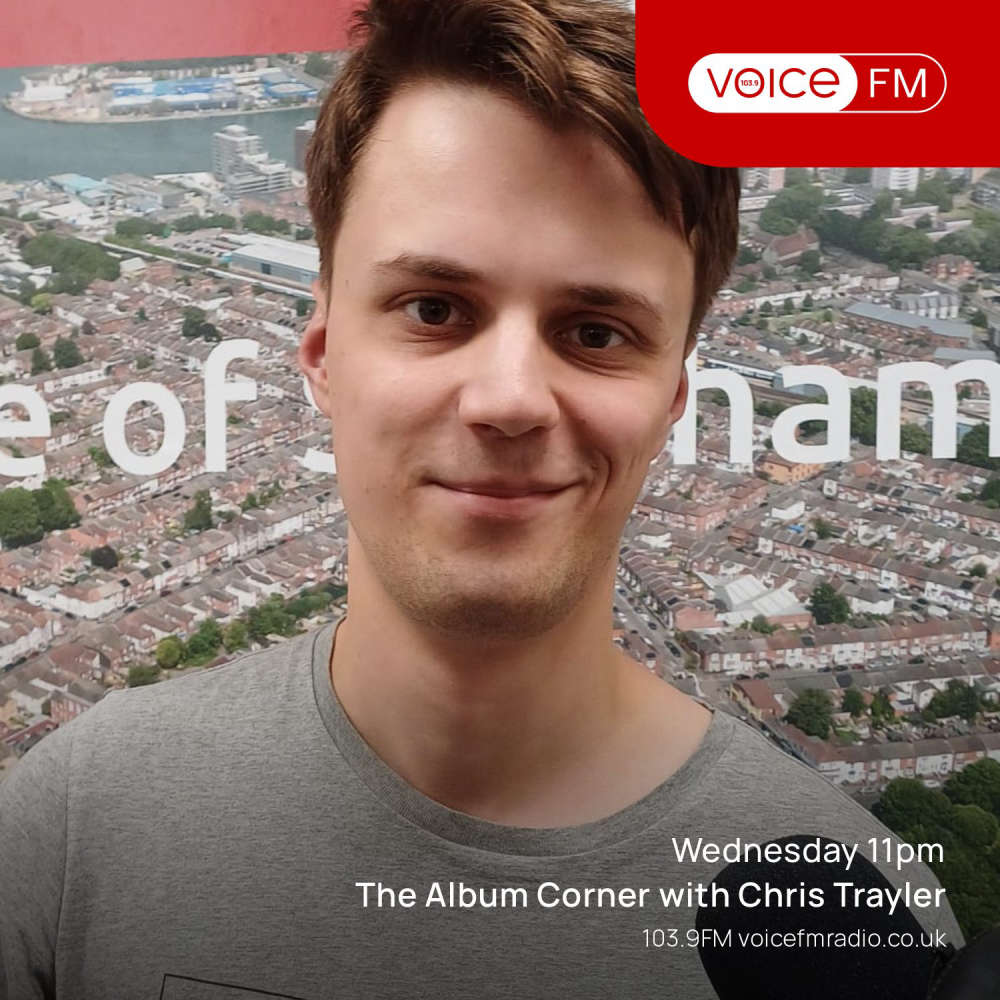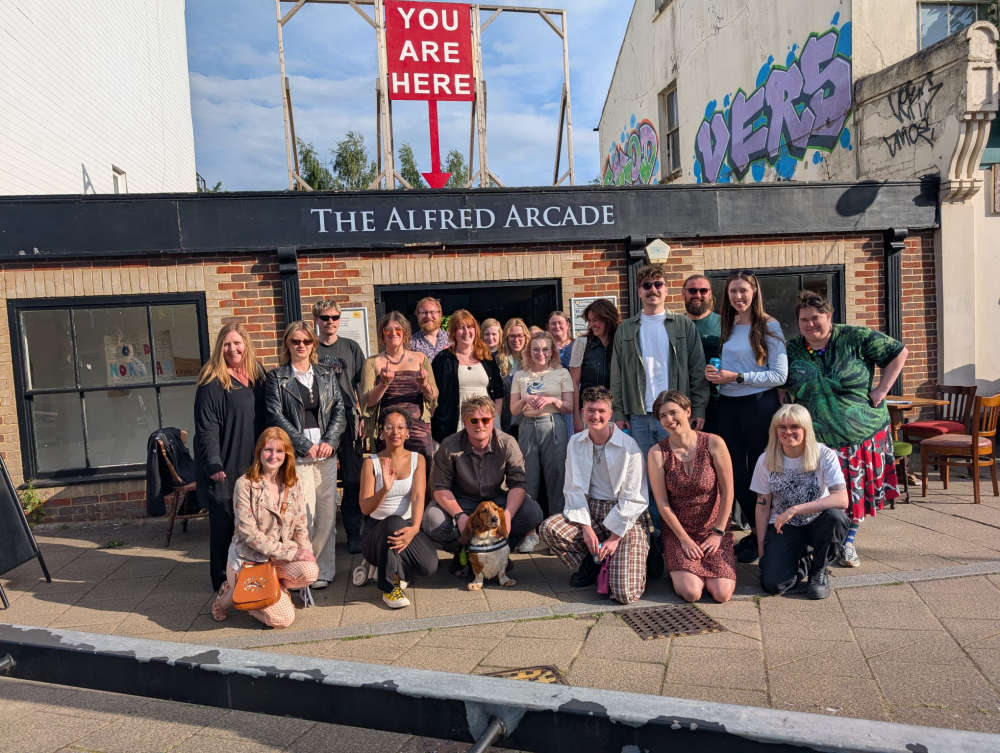
A hope-restoring exhibition.
Whenever I leave a ZEST exhibition, or see their artists selling at one of Southampton’s Christmas markets, or spot the artworks they have discreetly installed around the city (from Kane Applegate’s large orange kayak on top of Tower House, to James Hewins’ ‘Caustic Bloom’ project which has re-wilded patches of land across town), I leave feeling hopeful.
Taking over Niche Gallery – the city’s newest arts space co-founded by ZEST members Applegate and Ellen Gillett – and a stretch of the Old Northam Road, ‘Roadmap’ was the collective’s largest exhibition to date. The culmination of a year and a half working on their artworks, collaborating with their sister group ZING, and engaging with the local council by putting on events and workshops, ‘Roadmap’ was a two-day celebration of community spirit.
In Niche Gallery, the Hidden Wardrobe, the Alfred Arcade, and the Alfred Arms (as well as in dozens of nooks and crannies along the Old Northam Road) ZEST artists filled the street with photographs, paintings, textiles, sculptures, drawings, video installations, and soundscapes, with live poetry readings and DJ performances on the opening Friday night. Speeches from ZEST co-directors Gillett and Net Warner, watched adoringly by a 50-strong crowd of artists and art lovers, demonstrated quite how much this collective means to its community. Beyond the artists simply being pleased with their own individual artistic contributions to the show, ZEST seemed palpably proud of themselves as a unit – they walked around with knowing grins that they had done it, and that what they had made was important.
In a typical group show review, I’d list a selection of highlights, but that’s not the point of ‘Roadmap’. Authorship of artworks felt more ambiguous; not necessarily that every artwork felt as if it had been made by the group collectively, but more that it didn’t really matter who had made it. It was all just ‘Roadmap’, and for two days it was all theirs.
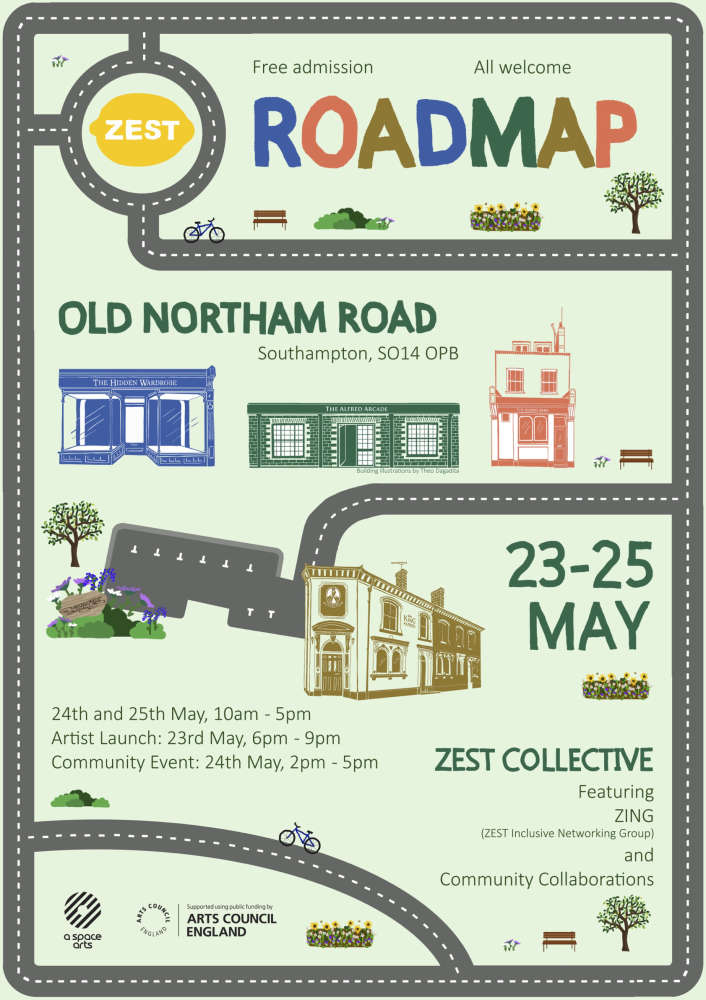
Anna Marris and Alex Sutherland’s maps, created for the exhibition to guide visitors through the various exhibition spaces and also used for the poster, may be what has stuck with me most, however. The design was reminiscent of the coarse rugs found in children’s bedrooms and reception classrooms, showing the layout of an idyllic city, complete with public libraries, supermarkets, fire stations, schools, and parks, all navigable by toy cars pulled clumsily along wide grey woollen roads. This collection of buildings on the Old Northam Road - a blooming "artists' quarter" - belongs on a map like that, in a world like that.
ZEST exhibitions leave me with that optimistic feeling that people are working towards a world where we celebrate each other, where we prioritise creativity, do it ourselves in spite of structural barriers, and honour community.
'Roadmap' may have been ZEST's largest project to date, but it in no way felt like its apogee. Southampton's future as a home for pioneering creatives is safe in this collective's hands. And if every city in the UK were lucky enough to have their own group of brave, resourceful, innovative artists, adamant to make their spaces be beautiful and their art be seen (and – crucially - if these groups were suitably funded), then perhaps we could all be a little more hopeful about the health of our communities.


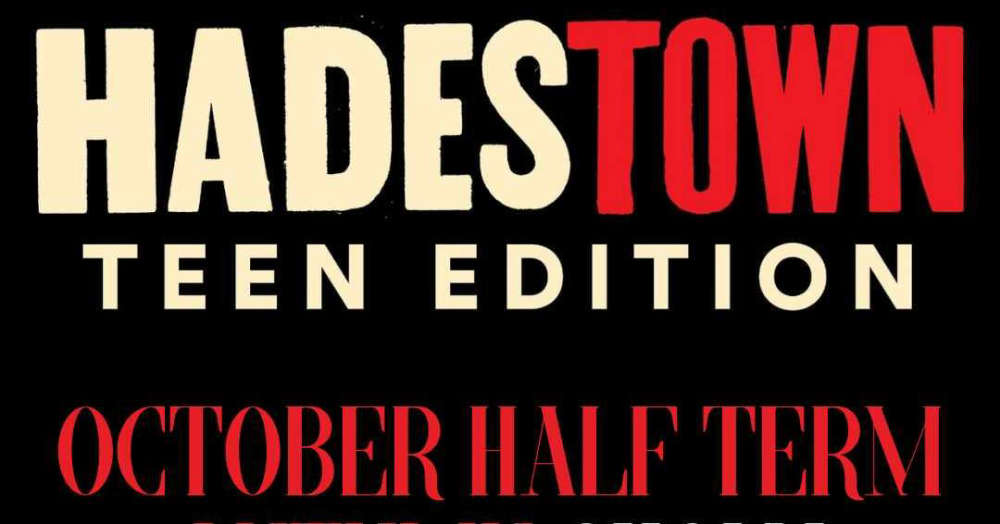 Review: Hadestown: Teen Edition
Review: Hadestown: Teen Edition
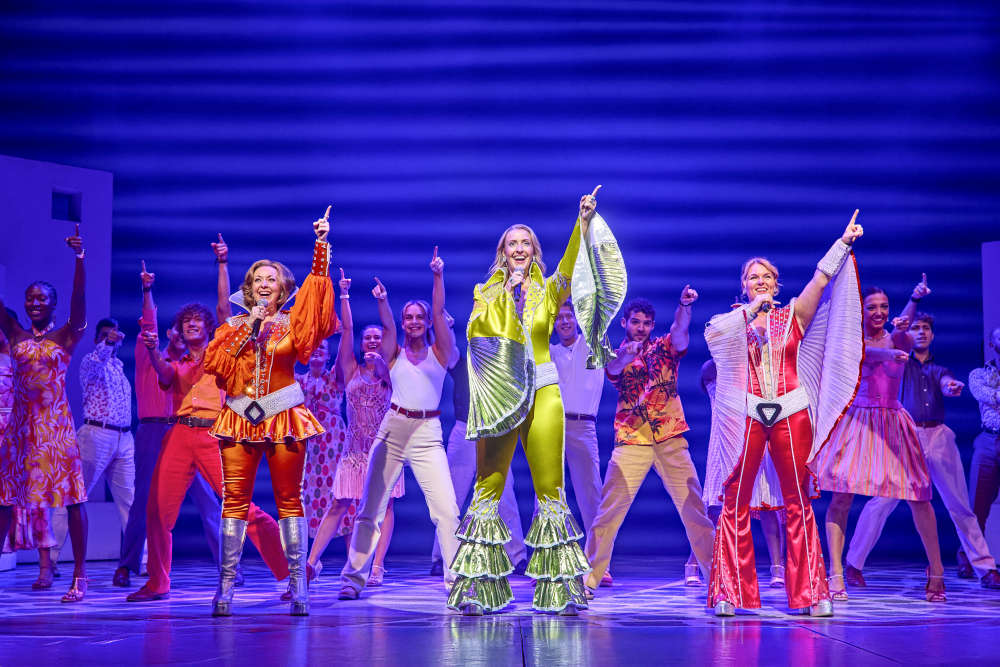 Review: MAMMA MIA! at Mayflower Theatre
Review: MAMMA MIA! at Mayflower Theatre
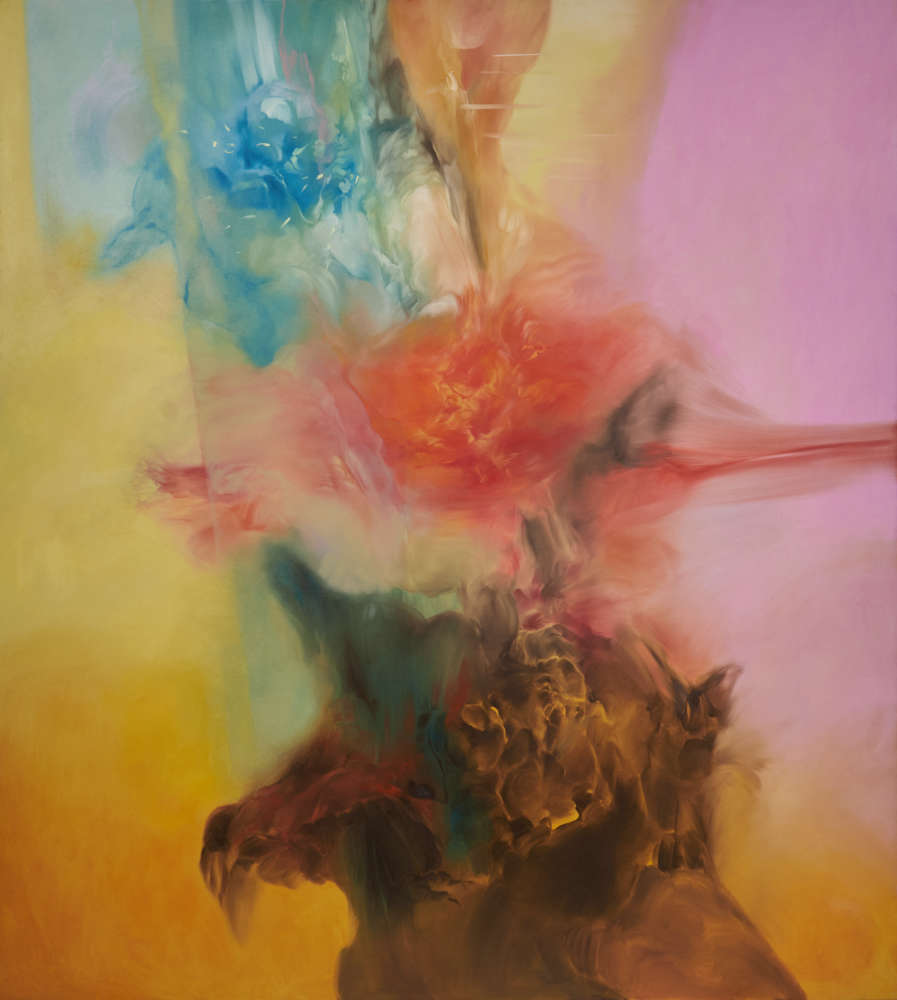 Emma Richardson Exhibition To Reopen Southampton City Art Gallery
Emma Richardson Exhibition To Reopen Southampton City Art Gallery
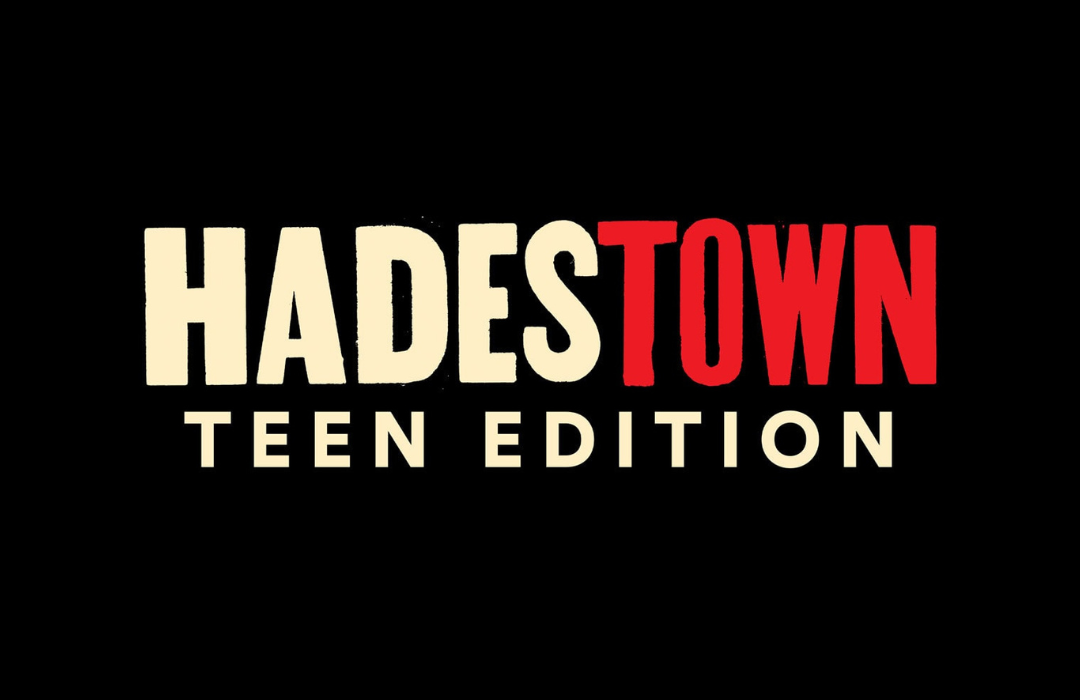 Hadestown - First Teen Production
Hadestown - First Teen Production
